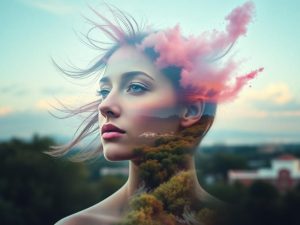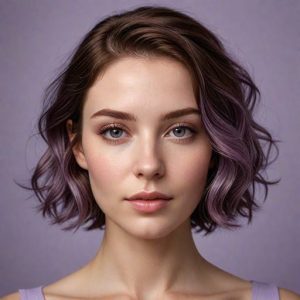How AI Trains to Create Art That Seems True
The stuff of art in the good old days required brushes, pencils, and even film; tools whose movements could only be directed by innately human hands. Nowadays, however, the term ai powered image generator can be found everywhere, whether it is in tech blogs or common conversations. Robots that create convincing, realistic images have been the vogue of the age. But, learned those systems? How much are humans in control, and how much does a locus of machine creativity originate? And with that, here is the cliched-and-yet-fresh art-meets-algorithm beast opened wide. Spoiler: It’s a crazy-looking ride with a single pixel at a time.

The Nuts and Bolts: AI Visual Realism Training
At their essence, the AI image generators follow a pattern that is etched deep into their electronic minds. Instead of color or pencils, they consume unbelievable amounts of pictures. They include: anything from Monet’s lilies to mobile phone photographs. A dataset such as this popular image of a visual smorgasbord is referred to as a dataset.
Within these databases, AIs pursue inexorable patterns—the curve of shadows on fruit, the fuzz on a cat, the strie of lights on an urban street in the rain. This sort of pattern-spotting is not fanciful, but mathematical and is a result of repetition. Learning-based systems—such as neural networks—need to consume millions of examples. They come to know that the sky tends to wave overland, or that smiles will usually be characterized with a slight inclination of the mouth.
The results of their effort are later passed to be evaluated by a different section of the system. Scholars term them as discriminators to critical fanciers of artwork on the lookout for red pen to do away with inauthentic work. Only the most survive this predatory competitive series. AI sharpens itself cyclically, and its ability to make more accurate answers gains more and more quality.
The Balancing Act Part 1: Creativity vs. Human Steering
Having a copy-taking AI, though, is not the endgame. The artist will be pictured as a paint-by-number genius, not very motivational. The next killer question is, how do we exert creative control whilst provoking true digital invention?
Humans give instructions in the form of prompts—small instructions, sometimes poetic, sometimes detailed, that indicate the direction of the AI imagination. Google the term in an image generator: a futuristic city at sunrise covered with purple fog, and here is how the machine interprets this vision. Or better yet: a happy dog. Your dog will give you a dog, most likely smiling stupidly. This sublimation of detail to free interpretation enchants both the artist and the engineer.
Other musicians are more experimental and just throwing (sur)real situations at the AI to check out what happens. It is a play with a cyberania touch. They demand precision, as other users specify how to style it, what mood, and color schemes to use. It ranges a great deal—in some cases the AI essentially serves the role of a tool, but in other instances, it is more like a colleague.

The Limits, Surprises, and the Wild West of Errors
Not all the results are masterpieces. The AI is sometimes misled, littering a portion of the horse with way too many limbs or putting together a face that is a little frightening. These errors, often humorous, sometimes creepy, reveal some constraints of machine learning. The system, though strong, is limited in its creativity, which rests on the patterns that are in the data. Give it something that it has never seen before, and you can have the latest in wondrous genius invention, or an out-and-out digital mess.
However, here is the kicker: The unpredictability is a draw, not just a minus. Other designers embrace these digital slip-ups by using AI-generated oddities as starting points for new projects.
Ownership and the Command of Conduct Puzzle: Ethical Issues
It is a question of originality, though: If an AI generates an image by taking into account thousands of photos and paintings created by other people, is it still original? And who owns it? The typist of the prompt? Was the code built by the engineers? How about the makers whose work trained the AI at the beginning?
The argument is contentious and unending. Some artists believe that their style is appropriated and it is mechanically reproduced on a button-press. Still, some people regard the AI tools as a novel way of artistic expression and a new palette to paint digital pictures.
Such a contradiction raises sharp questions pertaining to the values, credit, and fairness. Support activists demand openness: transparent marks when there was AI in the mix, documentation of what went into the training sets, and even royalties to the original creators. It is yet to be done as to whether the demands mould the industry or not.

Implication of the Real Life: Marketing to Movie Magic
There has been a surge of technological prowess that has swept across industries like a tech-driven tornado, using AI-driven graphics. Marketers gladly employ them to create campaign images in record time. It takes Game studios minutes to come up with the landscapes or character designs, saving them critical hours. Artists in the visual arts use AI as a sketchpad-like tool, a tool that can quickly provide dozens of variations.
Filmmakers are playing with storyboarding and lighting, and even entire backgrounds with AI tools. Medical researchers graphically represent complicated outcomes or produce training materials for diagnosis. Ordinary people get into it as well and create AI art to entertain friends, demonstrate a concept, or simply satisfy the creative urge without any traditional skills.
